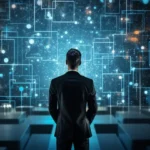Operating a business is a process that entails exposure to diverse risks which may compromise financial outcomes, operations as well as reputation. Companies deal with challenges that demand protection and preparation on a daily basis due to the occurrence of sudden natural catastrophes or alterations in the market or legal allegations. Business insurance is a critical part of this process, and it is not sufficient to guarantee long-term stability with its help. A more resilient system of integrating insurance with other risk management practices can be developed, which would allow a company to survive in the face of uncertainty and bounce back more quickly.
By combining various risk management strategies, a business will be able to deal with threats on various fronts. It develops a proactive system in which prevention and protection collaborate. This does not only ease the financial burden that may arise due to any unexpected occurrences but also enhances an operational confidence. It is always true that business leaders who incorporate insurance cover with other strategic measures are in a position to deal with any disturbances without losing track.
Understanding The Purpose Of Business Insurance
Business insurance is meant to protect a company against losses that may otherwise threaten its existence. It offers financial treatment in case of unpredictable events like accidents, damage to property or lawsuits. This kind of coverage is such that an organization does not have to shoulder the entire recovery amount on its own. It serves as an economic cushion that cushions at hard times.
Insurance alone, however, does not remove all of the risks. Policies have restrictions in terms and exceptions as well as amounts of coverage. There are still possibilities of a business experiencing some problems like data breach, supply chain disruption or inefficiencies in its operations, which might not be covered by insurance. The identification of such limitations is the initial step to come up with a well-built risk management plan that extends beyond the protection of policies.
The Role Of Risk Assessment And Prevention
Risk assessment on a regular basis is one of the most effective mechanisms to enhance stability of the business. Companies can also prevent exposure to threats identified earlier before they result in serious consequences. It comprises the assessment of the in-house and external risks including the safety of employees, market instability, and technological threats. With a thorough knowledge of the areas of weaknesses, more solutions can be targeted.
Some of these prevention measures can entail employee training, new safety measures, and robust cybersecurity mechanisms. Such active solutions lower the risk of expensive accidents and supplement the current insurance policies. Insurers can also see that the company is a low-risk client, and this can also result in lower premiums when the company has shown a commitment to prevention.
The Value Of Financial Planning And Reserves
Financial planning that accommodates the emergencies should also be incorporated in a comprehensive risk management approach. An emergency reserve fund will act as a buffer in case of an emergency. This liquidity enables the business to meet urgent business expenses without having to wait until an insurance claim is filed and approved.
Financial forecasting is also used to determine the effects of possible losses on the revenue so that the management can make the right decision regarding the coverage requirements. A good financial strategy complements business insurance as it is well established that the risks whether long term or short-term are dealt with efficiently. The combination of the two creates a platform that enhances the resilience of the company to economic or operational strains.
The Importance Of Legal And Compliance Measures
Another important aspect of business risk management is compliance with the law. The adherence to the regulations in such aspects like workplace safety, data protection, and labor laws can help avoid expensive litigation or fines. The risk that businesses cannot easily transfer by insurance is minimized by businesses that have solid compliance systems.
Also by engaging legal professionals, a company can determine any gaps in the policies and contracts. These professionals make sure that the contracts on insurance correspond to the legal requirements of the company and the conditions of coverage are evident. The legal monitoring of the business and the insurance of businesses would keep the business safe in financial terms and legal terms.
The Advantages Of Technology And Data Managing
Modern risk management has been integrated with technology. Such digital tools as predictive analytics, monitoring software, and secure cloud systems aid in real-time tracking of risks. The analysis and collection of data will enable businesses to foresee issues at an early stage when they have not expanded. Such understanding can enable quicker responses and better mitigation measures.
Transparency and accountability are also enhanced by data management. Vulnerabilities can be found in business patterns where the stored data of incidents, report of claims and operation metrics are reviewed and analyzed. Such constant feedback loop reinforces the overarching risk management strategy, and the business insurance providing financial security is supplementary.
Developing A Risk Awareness Culture
A company that promotes the culture of risk awareness will be in a better place to react to challenges. Employees can help with stability when they know about possible threats and how to behave in a responsible manner. The environment, in which all people are involved in risk management, is provided through the training programs, open communication, and regular policy reviews.
Such a responsibility ensures that management is not left with the sole role of prevention and protection. Having a risk awareness of the company culture, any decision taken in the company is an indication of the knowledge of the consequences. This cultural strength is what adds value to the other tools such as the business insurance whereby the protection measures are adequately supported by the daily practice.
Conclusion
Integrating business insurance with other risk management instruments is a moderate solution to the safeguarding of the long-term interests of a company. Prevention, legal compliance, technology, and culture are all being used to provide lasting stability, although insurance continues to play a crucial role as a safety net. Combined, these components create an all-encompassing shield that does not only deal with the threat but also aids in confidence, development, and strength against a rapidly evolving business landscape.










